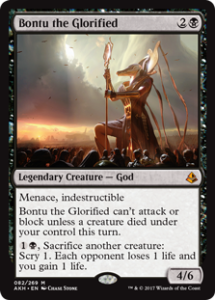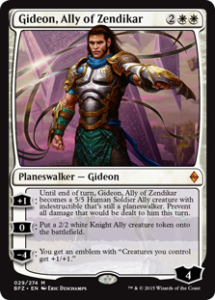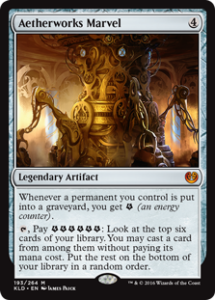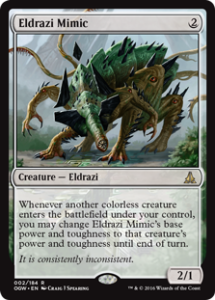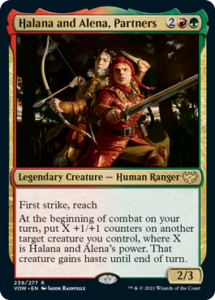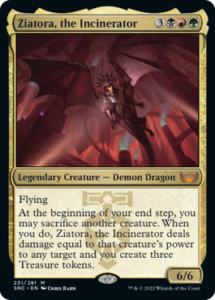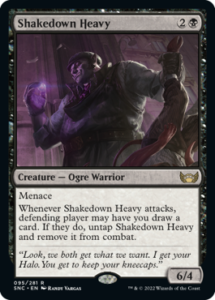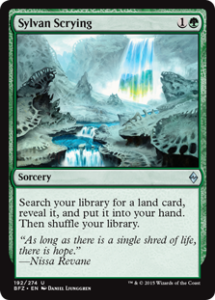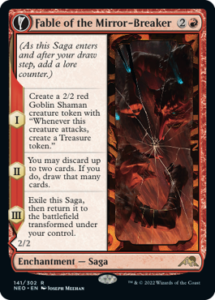Tips for Deckbuilding
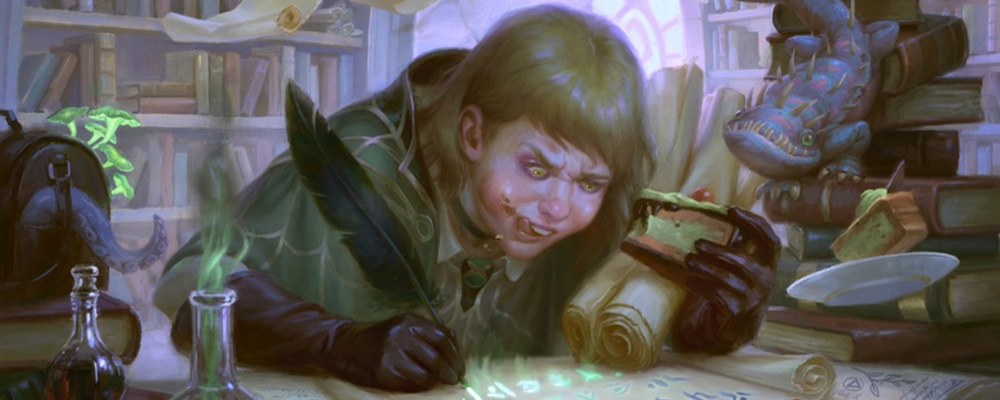
Rotation is on the way. With so many new formats to play, and the never ending power creep, there’s sure to be some bangers that shake up formats.
To me, the most fun part of rotation and new Magic sets is watching the metagame develop and shift. I’ve often thought about how if one person didn’t have one idea, entire formats may have been forever different. In the earlier years of my career, information didn’t move that fast. Sets were slow to release on MTGO, and the Pro Tours were the exciting place to find new decks.
From my years in a testing house, these are a few things I learned about developing new decks or new ideas.
Poor mana

Now this isn’t always a solvable problem. If you come to me and tell me you have a sweet idea for a five-color aggro deck in a format without fetches and shocklands, you’re probably not going to build a functional deck. However, tweaking mana bases is difficult and the weakest point of my own game. The first way to rule out an idea is if the format’s mana can’t support it.
With the upcoming Standard rotation, we have a big lead on what three-color decks will work and what won’t. We haven’t seen the multicolor lands in Dominaria United, but assuming they’re some dual-land cycle, we’ll be seeing a lot of decks designed around the Triome cycle from Streets of New Capenna. In many cases this early in a Standard format, the downside for an extra color will be quite low. There will be a limited amount of dual lands to begin with, so adding extra colors will come at the cost of basic lands and potentially a couple of more utility lands.
Regardless, when you’re building your decks and playing games, focus on if the mana is creating issues. You might throw out a deck because it’s playing a turn behind too often, which could be because you’re playing too many tapped lands and not enough basics. Better yet, figure out if your two-color deck can support a third color to increase card quality.
Attachment to personal ideas

I’ve tested with a lot of the best players to play the game. One thing that would still happen in testing is players would find decks that have some promise and work on them past their expiration date. Some ideas just aren’t good enough. There’s a whole world of content creation for tier-two decks. If you don’t care about winning as much, or winning with a specific idea that you have, that’s totally understandable. In a team setting at a pro level, we wanted to play whatever gave us the best chance, but it’s reasonable and expected that in your hobby you want to enjoy and express yourself.
That said, if your goal is to just win, you have to be honest with yourself. Is my deck good enough to win a tournament? You may be biasing yourself because our own ideas are the hardest to let go. It’s easy to critique someone else’s work, but we all want to create something extraordinary, so it makes sense that you will spend a lot more time tuning your own ideas.
I spent a lot of time on a Golgari Bontu deck leading up to Pro Tour Amonkhet. Bontu, the Glorified was well-positioned against Gideon, Ally of Zendikar. It was hard to put it into play with a Bontu. However, Bontu wasn’t a good card. I designed an entire deck around the card, and I gave up a few days before the event because the deck was just not that good against Mardu or Marvel decks. Other people grew attached to the deck, worked on it, and played it, but did poorly overall.
When you’re in a testing environment, even if you have an idea, it can lead others down the wrong path, so you have to be careful what you present and how you present it.
Optimization

In many cases you may be winning a lot with a good deck. Good news, right? Well, you still need to go that extra step and figure out if you should be winning more by changing some of your worst cards. We’ve had formats where decks were never truly optimized, and via the copy-and-paste method, cards never got changed.
One situation that comes to mind was Colorless Eldrazi. We worked a ton on the deck because, while it wasn’t the most busted thing in our earlier iterations, it was doing a lot of winning. The problem with the deck was we didn’t want to play another color, but we also didn’t want to play a lot of the worse cards we had registered. When Jacob Wilson had the idea of playing both Simian Spirit Guide and adding Chalice of the Void to the main deck, the deck truly became broken. We made our worst cards our best cards in some match-ups.
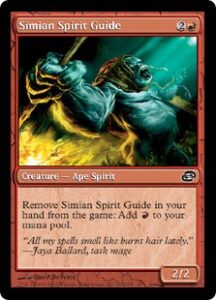
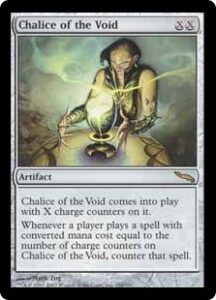
Optimizing your deck for the expected metagame is always important. Even great ideas can be improved upon.
Pet cards

There are many people who build decks around an idea. That idea is sound and logical, but in practice it doesn’t work out. However, the deck teaches you some things. Maybe a different card impresses you that was part of the deck but not a part of the core idea. Then, the deck becomes something different. In many cases, people will be attached to one synergy or combo that they had originally envisioned in a deck, and while the rest shows promise, they insist that their core idea is important.
I remember most recently testing for Streets of New Capenna, and we played a lot with Fight Rigging decks. Raph Levy designed a version of the deck that was doing quite well in our ladder days of testing, in fact the best of any decks we had. We didn’t understand it because it seemed like such a meme. In reality, the Fight Rigging combo was okay but not optimized. We were winning in spite of it, not because of it. Halana and Alena, Partners was pulling tons of weight. In a format full of Vanishing Verses, Halana and Alena was a great card. Ziatora was also a fine top-end spell despite looking like a Commander card. It was powerful, hard to kill in the format, and was able to go over the top of Esper at times.
While we eventually moved away from the deck, Raph was confident enough to play it in the event. We learned a few things about the deck, the cards, and the format. Many other people piloted a similar deck and did well playing a Fight Rigging version. While the Fight Rigging combo was okay, it made you play bad cards like Shakedown Heavy and getting attached to that card would lead you down a worse path.
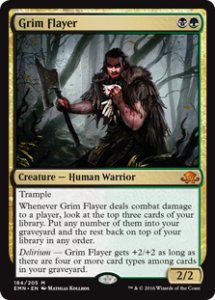
My personal pet card that got me in trouble a lot, was Grim Flayer. I absolutely loved the card and while it was quite good on the play, it was just too bad in almost every format on the draw. It would rarely if ever connect, and by the time in the game it was delirious it was often just too undersized. I myself won a lot with the card, but I think in many cases it was in spite of the card, and not because of it, and I probably should have optimized a bit better.
Not the right time

One of the most frustrating things is building a deck that is good in the right metagame, but you misjudged the metagame. Some ideas aren’t ready for the world yet.
This almost always happens with control decks in every format. Initially, control decks are tough to build because the field hasn’t whittled itself down to a few decks. If you’re trying to control things, it’s hard to play control against something you’ve never seen. You won’t have the right tools, and even if you did, you’d be missing them for something else. Let the dust settle and let a metagame develop before you play anything too reactive. If a deck seems promising, and you’re able to keep match-up information in your head, someday you may realize that a bad match-up that concerned you no longer exists, and it could be time for your deck idea.
I once built a ramp deck laying in bed during a Grand Prix. I was sharing a room with Alexander Hayne at the time. We didn’t like the versions of ramp we built before, and I had an idea to remove all the creature ramp and only use ramp that were fetched for lands, even Sylvan Scrying to find Shrike of the Forsaken Gods and other utility lands. The Grand Prix wasn’t important, as I was preparing for Pro Tour Battle for Zendikar at the time.
The deck felt great. The problem was it was like 10% against Atarka-Red, the most popular deck at the event. We eventually scrapped it and ended up playing Mono Red ourselves. Most of us, including Paulo who placed in the top eight, played the event with Atarka-Red. Atarka-Red was smooth, but it had such a bad match-up against Jeskai decks that it didn’t do well at the Pro Tour.
The Grand Prix the next weekend featured the same Standard format, and Atarka-Red was not a good choice as the flavor of the week was Dark Jeskai, a deck that our ramp deck was quite good against. I ended up playing the deck at the GP and not doing well, but one of the other few pilots, Jake Mondello, placed in the top eight with the deck that eventually ended up being affectionately referred to as “The Naked Siggy” because I built it lying in bed in my underwear.
Some promising decks just need to find the right time to shine.
Finding diamonds in the rough

One thing that happens frequently in testing is finding cards that overperform. You’ll have an idea for a deck, and a card truly impresses and overperforms.
Fable of the Mirror-Breaker is a recent example. While testing Alchemy for a recent Set Championships, Logan Nettles added some copies of Fable of the Mirror-Breaker to our Runes deck. The card shined. It wasn’t obvious to us, but we made a huge mistake not trying to find a new home for the card. It’s hard to say we made any mistakes in the event, as Eli Kassis won the tournament with our deck, and our deck was one of the top performing decks in the tournament, if not the top performing deck. However, it likely could have been improved if we added Fable to our Orzhov deck or tried playing a Mardu Version with it. Fable has been the best card in Standard ever since, and in the testing stages, trying the cards and finding out if they play well is incredibly important.
While some deck ideas may fall flat, what’s really important is finding the best cards in a format, and designing with them in mind.
I’m looking forward to seeing more of Dominaria United in the coming days and weeks and getting my first taste of the new Standard format. I always try to keep these kinds of ideas in my head when building decks, and I think there are tons more heuristics to have when settling down to try new cards.
Image Copyright: (c) 1995-2020 Wizards of the Coast LLC, All Rights Reserved





